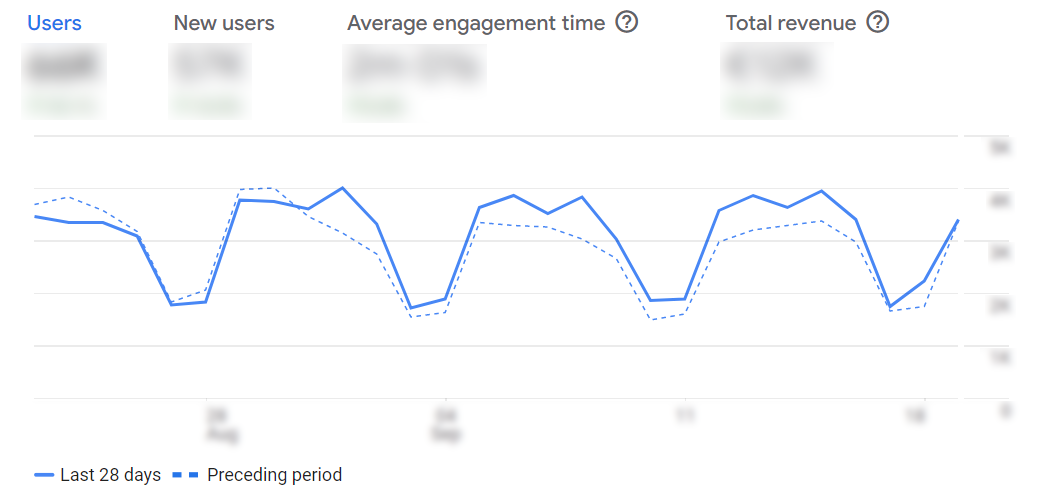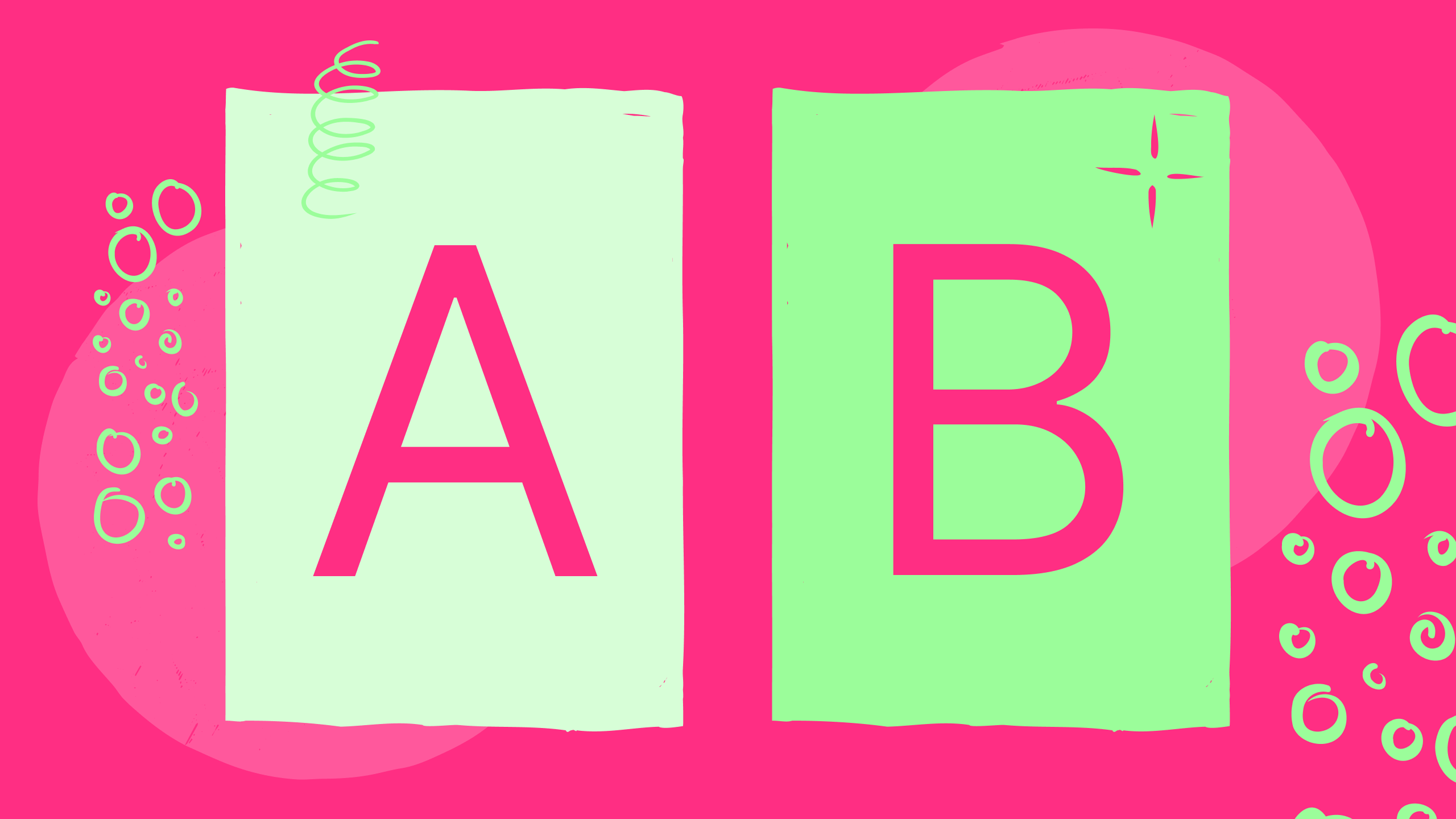As the operator of an online shop, you constantly have your hands full: customer support, supplier management, stock management and much more. Last but not least, of course, marketing. Optimisation through A/B testing plays a special role in a company’s marketing mix.
A/B testing is one of the most important tools for advanced shops to find out exactly where hidden potential lies. In this article, you will find out what A/B testing is all about, who it is important for and how you can best implement it.
What is an A/B test?
A/B testing is a method of finding out which website design, content or functionality is most successful with visitors to your website. This allows you to test a variation or element of your site that can influence the behaviour of your customers.
Common examples of A/B tests include changing the colour of a button. Imagine you want to know whether your shop visitors are more likely to buy something if the “Add to basket” button is green or red. In an A/B test, you test both colours for a while and then see which one works better. In this way, you can gradually make data-based optimisations in your shop that are precisely tailored to your target group.
However, many e-commerce companies do not know how to carry out A/B tests effectively. Yet A/B tests, when done well, are an effective way to improve your company’s key performance indicators.
WooCommerce Hosting
With WooCommerce hosting, you can launch your own online store quickly and securely and manage it professionally – without any technical hurdles. Check our Raidboxes WooCommerce Hosting now.
Why are A/B tests important?
Did you know that, according to Statista, 44.5% of companies worldwide consider customer experience to be the most important differentiator from the competition? However, creating a good customer experience is not just about using your intuition to predict what will attract and convert potential customers. Rather, you need tangible insights into what your target group actually wants.
Entrepreneurs always make the same mistake at this point: they trust their gut feeling too much. Especially when you’re self-employed and running a complex e-commerce project, you sometimes have to listen to your intuition. When it comes to shop optimisation, the most promising way is definitely an A/B test.
A/B tests not only bring your shop to success faster, they also save important resources such as time and money. With carefully designed tests, you can quickly achieve meaningful results that will move your online shop forward.
Probably the most prominent example of successful testing and optimisation is Amazon. The US company has developed from an e-commerce shop that only sold books into the largest online retailer in the world. Much of this success is due to constant testing, experimentation and the development of innovations.
Take a look at how Amazon has revolutionised the online shopping experience:
- one-click ordering
- Dash buttons that allow products to be reordered at the touch of a button
- free shipping
- Next day delivery
- Personalised recommendations
These innovations are now world-famous. Online shops are constantly trying to imitate Amazon’s optimal customer experience. These developments are no coincidence – they are the result of continuous testing and measures based on reliable data.
It’s inevitable that you’ll make changes to your e-commerce website at some point. Be it to your wording, your SEO tactics or your checkout process. If you want to make the right changes and convert more of your existing traffic, A/B testing is the best way to go. This way you can gain meaningful insights and get your shop on the right track.
Subscribe to the Raidboxes newsletter!
We share the latest WordPress insights, business tips, and more with you once a month.
"*" indicates required fields
How do A/B tests work?
A basic distinction can be made between two types of A/B tests: customer-side and server-side.
Customer A/B test
During customer-side testing, each visitor is sent to exactly the same version of a website. This is changed in the visitor’s browser using JavaScript before they see the page.
Server-side A/B test
During server-side testing, your web server shows visitors different versions of the page and changes them on the server before they are sent to the visitor’s browser. No changes are made to the page in the browser.
For example, you can send 50% of your visitors to variant A and 50% to variant B. You then analyse the performance of each page variant to determine whether variant A or variant B is more effective in terms of a specific goal. The specific goals can be very different, such as signing up for an email newsletter, clicking on a link or making a purchase.
You can also test in the following ways:
A/B tests for native iPhone or Android apps
A/B tests are somewhat more complex for applications. This is because it is not possible to present two different versions once the app has been downloaded and deployed on a smartphone. There are workarounds that allow you to update your app immediately. You can easily change your design and analyse the impact of this change directly.
Split tests or redirect tests
The split test redirects your traffic to one or more different URLs. This can be an effective approach if you are hosting new pages on your server.
Multivariate tests
The multivariate test measures the effects of several changes on the same page. For example, you can change fonts, the colour of your text, call-to-action texts and many other elements
Enough traffic is the key
To be sure that the results are correct and not due to measurement errors, a certain number of visitors must be reached. If this threshold is not reached, multivariate tests can be inaccurate. In the worst case scenario, this can lead to you making changes that can damage your shop.

If your website is not generating enough traffic, you should consider investing in paid advertising or SEO first to increase your visitor numbers. Once you have reached the necessary traffic level, you can still perform A/B tests to get the most out of your shop visitors.
A/B tests with low traffic: what you need to watch out for
However, increasing traffic in your shop can be a lengthy endeavour. Especially if you are focussing on SEO , it can take several months before you notice any noticeable differences. So what should you do if you want to optimise your shop using A/B tests despite low traffic?
The good news is that you can use this tool even with relatively few shop visitors. However, to optimise your site with low traffic through A/B testing, you should keep a few things in mind.
Avoid excessive testing
The more aspects you test on a page, the more traffic is required overall for your results to be statistically significant. Instead, focus on simple A/B tests in which you test a maximum of one website element.
Test your top pages
Avoid testing areas of your website that only have a few visitors. It’s much better to test the sections of your shop that are used and seen everywhere. This includes website-wide tests, for example of the navigation bar, the announcement bar or the footer. This allows you to make ideal use of the existing traffic and achieve meaningful results in less time than if you were to test just one specific product page, for example.
Test changes with a big impact
Sometimes small changes have a big impact on the conversion rate (CR for short). However, it is more likely that testing a major adjustment will have a more drastic effect. Focus your tests on the sections of your website that are important to visitors. Then you will most likely have a greater impact on the CR than if you test very small changes on niche sites.
Choose goals wisely
Your main goal may be to increase the conversion rate or the number of newsletter sign-ups. However, with low website traffic, it can take an extremely long time until you have collected enough conversions to validate the results.
Alternatively, you can take a step back in the funnel and compare add-to-carts or click rates, for example. This allows you to generate the data volumes you need to achieve statistical significance more quickly.
You should still exercise patience, but if you follow these basic rules, you can carry out effective A/B tests in your shop even with low visitor numbers.
Managed WordPress Hosting
With our Managed WordPress hosting, you get a powerful, secure and easy-to-manage solution that quickly and reliably takes your WordPress project to the next level. Check it out!
Which shop elements should you test?
We’ve already talked a lot about what A/B testing is, how it works and how you can use A/B testing for your shop optimisation even with low traffic.
But what exactly can we optimise with the help of A/B tests?
Titles and headings
Font, text colour and content are the essential components of titles and headings. You can change these to see how your website visitors react to different visual impressions and different approaches. For example, you could test whether warm colours work better than cold ones, or modern fonts against serif fonts. Another option is to try a personal, humorous approach versus a factual, direct one.
Call-to-actions
Call-to-actions are an essential part of every shop. The specific call to action usually provides the final “push” that your visitors need to sign up for a newsletter, watch your video or add a product to their shopping basket. Testing different call-to-action texts can significantly increase your conversion rate in the long term.
Pictures
As we all know, a picture is worth a thousand words, which is why high-quality product images are a core element in every shop. However, you can test which type of image works best for you: Images in which your products are used. Images in which real people can be seen. Or very minimalist: a photo of the product on a light-coloured background.
Landing pages
It can make sense to create extra landing pages for certain promotions, specials or products. You can A/B test these to see which layout, design, page structure and texts are most popular.
Product prices
Testing the prices of your products is a bold step. Nevertheless, it can provide you with important insights, as price is one of the key factors influencing purchasing decisions. When testing prices, you must be careful not to alienate your community and customers if it becomes known that you are selling the same products at different prices. To avoid this, you can, for example, create offers that are almost identical but differ slightly in terms of benefits, accessories and service.
Forms
Clarity and organisation are extremely important for forms. You can change the title of a field, remove irrelevant fields, swap the placement of individual fields or customise the design.
Navigation
Navigation is at the heart of your shop. As the name suggests, it is used by users to navigate through your website and find their way around. With A/B tests, you can ensure that your navigation is sensibly structured and intuitive to use. This lays the foundation for a positive user experience.
Conclusion – Why you need to A/B test in your shop
Let’s recap at the end: You now know what A/B tests are and why they are important for online shop operators. You’ve also learnt about the variety of A/B tests, that sufficient traffic is crucial and how you can benefit from A/B tests even as a “low-traffic shop”.
Last but not least, we discussed the many different website elements that you can test in your shop. Be it the navigation, call-to-action texts or your shop images: With A/B tests, you can recognise untapped potential in your shop and exploit it like never before.
Your questions and answers about optimization through A/B testing
Do you have any other suggestions for optimizing your online store? Let us know in the comments below and we’ll discuss them. For more insights on WordPress, web design or online business, follow Raidboxes on Facebook or LinkedIn – or subscribe to our newsletter.


Leave a Reply